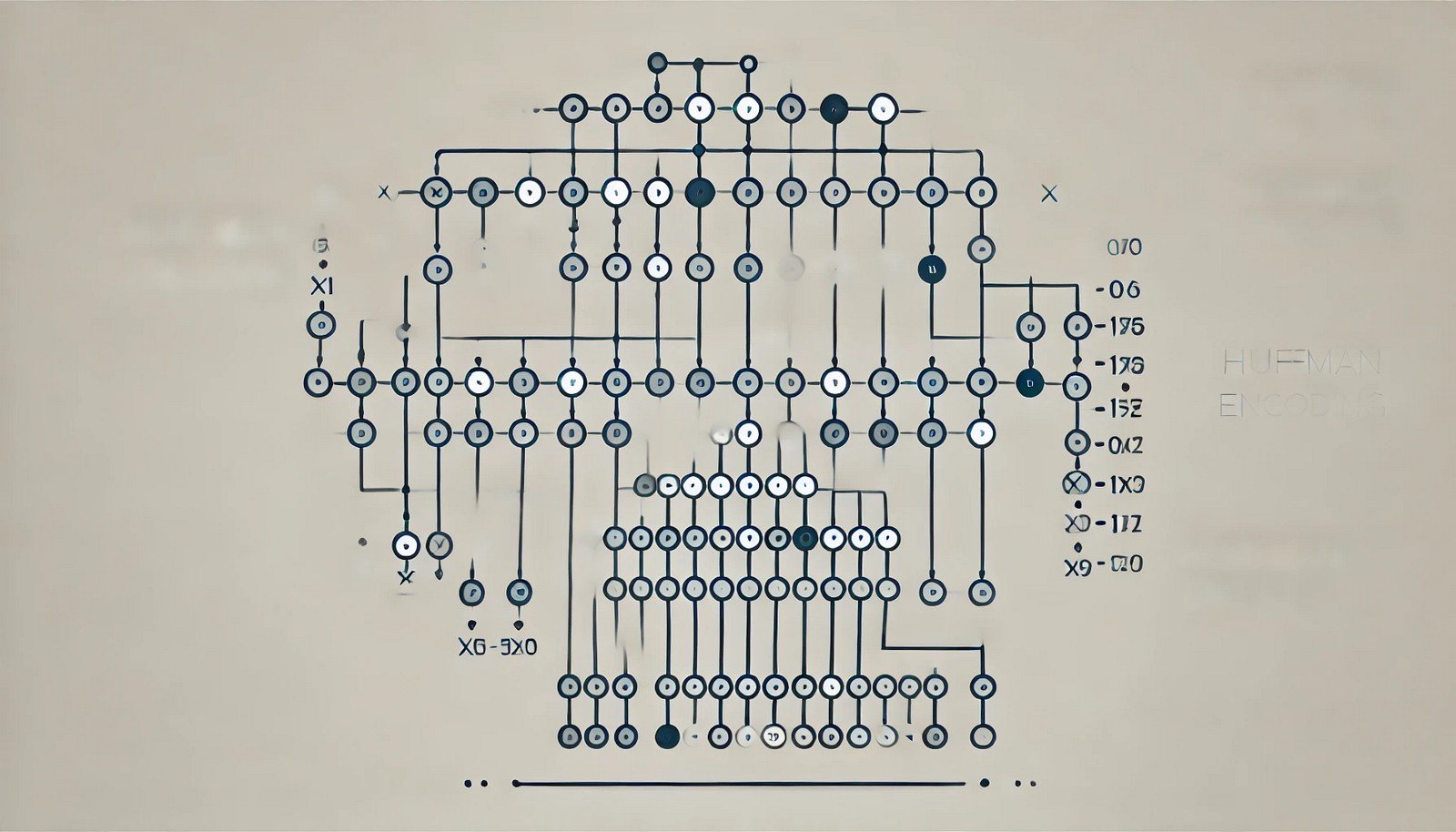Huffman Encoding
 (Representational Image | Source: Dall-E)
(Representational Image | Source: Dall-E)
Quick Navigation:
- Huffman Encoding Definition
- Huffman Encoding Explained Easy
- Huffman Encoding Origin
- Huffman Encoding Etymology
- Huffman Encoding Usage Trends
- Huffman Encoding Usage
- Huffman Encoding Examples in Context
- Huffman Encoding FAQ
- Huffman Encoding Related Words
Huffman Encoding Definition
Huffman encoding is a lossless data compression algorithm that assigns variable-length codes to input characters, with shorter codes assigned to more frequent characters. This minimizes the overall number of bits required for encoding. It uses a binary tree structure called a Huffman tree, where each leaf node represents a character, and traversal from root to leaf determines the binary code. Huffman encoding is widely used in compression formats such as ZIP, JPEG, and MP3.
Huffman Encoding Explained Easy
Imagine you have a long story and want to write it in a way that takes up less space. Instead of writing every word in full, you use special short codes for the words you use most often. That’s what Huffman encoding does! It finds the letters or words that appear most and gives them shorter codes, saving space while keeping the story the same.
Huffman Encoding Origin
Huffman encoding was invented by David A. Huffman in 1952 while he was a graduate student at MIT. The algorithm was part of a research paper on minimum redundancy codes, which aimed to optimize how data is stored and transmitted efficiently.
Huffman Encoding Etymology
The term “Huffman encoding” is derived from its creator, David A. Huffman, and the process of encoding, which refers to converting data into a specific format for efficient transmission or storage.
Huffman Encoding Usage Trends
Huffman encoding remains a fundamental technique in data compression. It is extensively used in file compression formats (ZIP, GZIP), multimedia encoding (JPEG, MP3), and communication protocols. Though modern compression algorithms like arithmetic coding and Lempel-Ziv-Welch (LZW) have emerged, Huffman encoding is still a core component of many compression techniques due to its simplicity and efficiency.
Huffman Encoding Usage
- Formal/Technical Tagging:
- Data Compression
- Information Theory
- Algorithm Design - Typical Collocations:
- "Huffman coding algorithm"
- "Huffman tree structure"
- "Lossless compression using Huffman encoding"
- "Huffman encoding efficiency"
Huffman Encoding Examples in Context
- Huffman encoding is used in GZIP to reduce file sizes without losing data.
- The JPEG image format applies Huffman encoding to compress color and texture information efficiently.
- Huffman trees help in Morse code-like transmission by assigning shorter codes to frequent signals.
Huffman Encoding FAQ
- What is Huffman encoding?
Huffman encoding is a lossless compression technique that assigns variable-length binary codes to symbols based on frequency. - How does Huffman encoding work?
It constructs a binary tree where frequently occurring symbols get shorter codes, reducing overall data size. - What is a Huffman tree?
A Huffman tree is a binary tree used in Huffman encoding to assign prefix-free codes to symbols. - Where is Huffman encoding used?
It is used in ZIP, JPEG, MP3, and other compression algorithms. - Is Huffman encoding lossy or lossless?
Huffman encoding is a lossless compression technique, meaning no data is lost. - How does Huffman encoding compare to other compression algorithms?
It is simple and efficient but sometimes outperformed by modern techniques like arithmetic coding. - What are the advantages of Huffman encoding?
It reduces data size efficiently and is computationally easy to implement. - Can Huffman encoding be used for real-time compression?
Yes, it can be applied in streaming data, though more optimized methods exist for real-time applications. - What are the limitations of Huffman encoding?
It requires the frequency table in advance and may not perform well on small or highly random datasets. - How does Huffman encoding relate to entropy?
Huffman encoding is closely tied to Shannon’s entropy, which defines the theoretical limit of compression efficiency.
Huffman Encoding Related Words
- Categories/Topics:
- Data Compression
- Information Theory
- Computer Science
Did you know?
Huffman developed his famous algorithm as a part of a term paper in a graduate course at MIT. Interestingly, he initially struggled to decide between two compression approaches, but his discovery of Huffman coding earned him an A in the class and changed the field of data compression forever!
PicDictionary.com is an online dictionary in pictures. If you have questions or suggestions, please reach out to us on WhatsApp or Twitter.Authors | Arjun Vishnu | @ArjunAndVishnu

I am Vishnu. I like AI, Linux, Single Board Computers, and Cloud Computing. I create the web & video content, and I also write for popular websites.
My younger brother, Arjun handles image & video editing. Together, we run a YouTube Channel that's focused on reviewing gadgets and explaining technology.



Comments powered by CComment